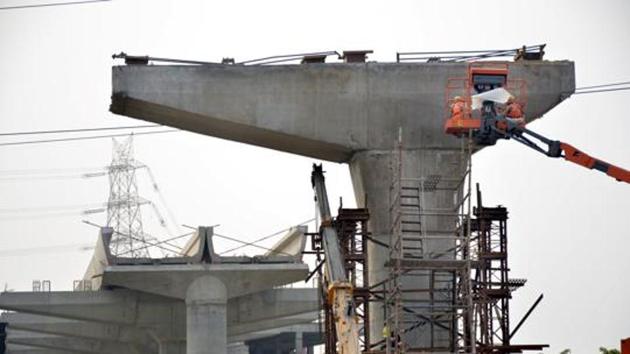Pile load test on rail transit corridor from to start on may 15
The tests will provide data for static and dynamic load-bearing capacities of ‘piles’ to be used in constructing the elevated corridor. Piles are pillar-like structures present in the foundation of the construction, which bears the weight of the above structures.
The National Capital Region Transport Corporation’s (NCRTC) Regional Rapid Transit System (RRTS) project will begin pile load testing for the Delhi-Gurugram-SNB (Shahjahanpur-Neemrana-Behror Urban Complex) corridor on May 15.

NCRTC officials said this is a crucial step, which is being undertaken as part of the project’s pre-construction activities. “Pile load testing is a process by which one can determine the types of civil structures needed for running a high-speed rail on an elevated viaduct,” Sudhir Sharma, chief public relations officer, NCRTC, said.
The high-speed Regional Rapid Transit System (RRTS) rail will cover a total distance of 106kms from Sarai Kale Khan in Delhi to SNB in approximately 70 minutes. The tests will provide data for static and dynamic load-bearing capacities of ‘piles’ to be used in constructing the elevated corridor. Piles are pillar-like structures present in the foundation of the construction, which bears the weight of the above structures.
“To ensure maximum compliance with the safety parameters, the piles will be tested using three times the vertical load, going above and beyond the actual design requirements. The whole process of pile load testing should be completed within two months,” Sharma added.
Earlier this month, on April 6, the NCRTC began the process of ‘utility mapping’ on the same Delhi-Gurugram-SNVB corridor. This process, which is still underway, will help the NCRTC identify the positions of public utility mains which are located underground. These include lines for telecommunication, electricity distribution, natural gas, water and wastewater pipes. The pre-construction process of geotechnical investigation is also underway and is being carried out to obtain information about the physical properties of the soil and foundations for the corridor. Construction work is expected to begin in October this year.
Stay updated with all the Breaking News and Latest News from Mumbai. Click here for comprehensive coverage of top Cities including Bengaluru, Delhi, Hyderabad, and more across India along with Stay informed on the latest happenings in World News.
Stay updated with all the Breaking News and Latest News from Mumbai. Click here for comprehensive coverage of top Cities including Bengaluru, Delhi, Hyderabad, and more across India along with Stay informed on the latest happenings in World News.






